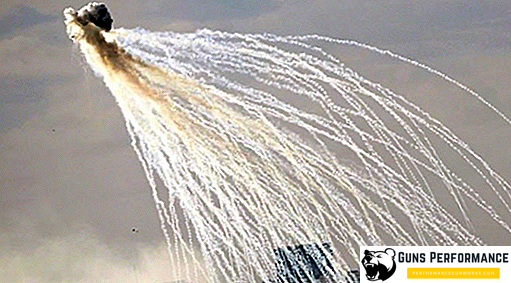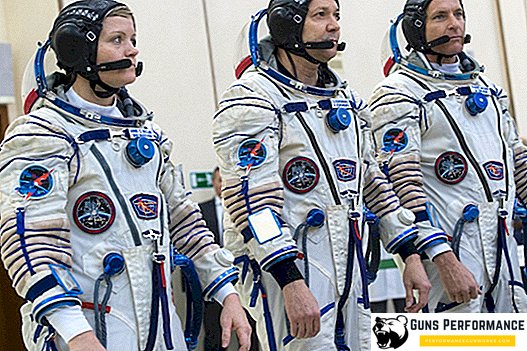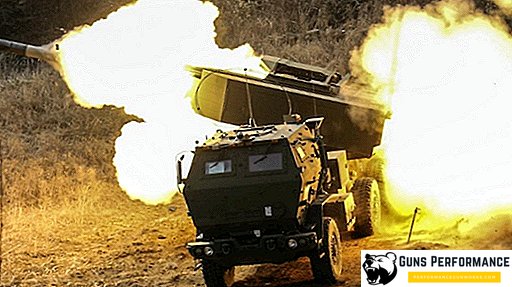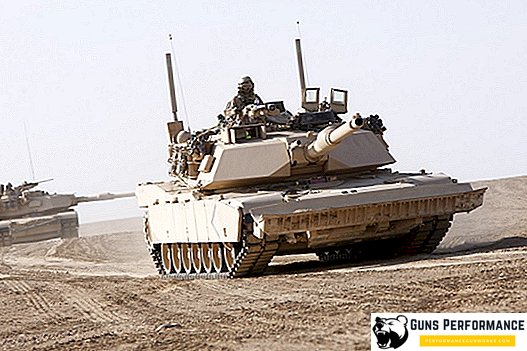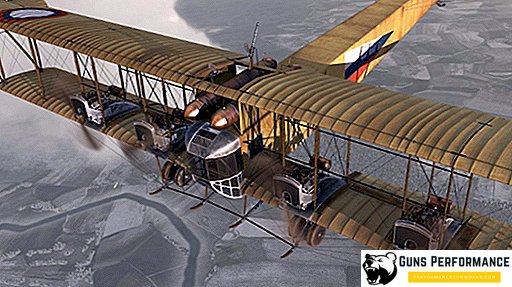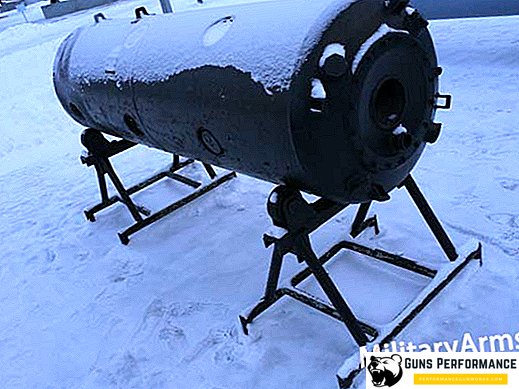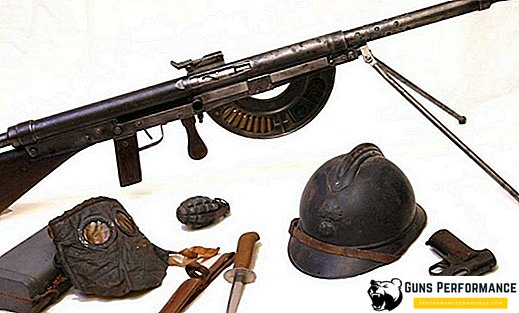
The First World War can be called the “high point” of automatic small arms. Manual and easel machine guns were not only massively used in the armies of all the countries participating in this conflict, but also largely determined its course, leading it to a stalemate, which military historians would later call "positional deadlock."
During the First World War or immediately after it, a large number of light and heavy machine guns entered the armament of various armies: the Hotchkiss, Madsen, Vickers, Browning machine guns. They had a different fate, for example, the Browning machine gun is still in service with the US Army. This material is devoted to weapons, which experts almost unanimously called the worst machine gun of the First World War, and even the entire twentieth century. We are talking about the French machine gun Shosh.
Shosh machine gun was adopted in 1915, production continued until 1927. During this period, several modifications of the weapon were made that could use different cartridges.

Shosh's machine gun was used not only by the French army, it was in service of the armed forces of Greece, Serbia, Poland, the USA and Finland. Despite the low reliability and very mediocre characteristics, the machine gun of the Shosh system managed to make war. In addition to WWI, it was used during the Civil War in Russia, the Soviet-Polish conflict, the Soviet-Finnish war. These weapons could be found as early as the 1950s and 1960s in the former French colonies in Africa and Indochina.
The history of the machine gun Shosh
The First World War began for the French not too successfully: in 1914, having launched a powerful offensive, the Germans almost captured Paris. France needed to change something urgently. The first months of a positional war showed the high effectiveness of machine guns.
Most of the machine guns of that period had a significant weight, were installed on the machine and served by the calculation of several people. They were very effective in defense, but few were suitable for offensive action. The troops needed a light machine gun that could carry one person.
The French created a special commission, which was engaged in the development of new weapons. It consisted of: Colonel-artillery Shosh (fr. Chauchat), designer Sutter (in other sources Sutta), as well as Riberol, who was supposed to start production of a new machine gun. It is to these gentlemen that the dubious honor of creating a loser machine gun belongs.
The history of the gun Shosh began even earlier, before the outbreak of world war. In 1910, Hungarian Rudolf Frommer commissioned by the Swiss army to develop a light machine gun, whose automation worked by returning the barrel with its long stroke. On top of this machine gun had a magazine with a capacity of twenty rounds. The project was very unfortunate, despite all the efforts of the designer, he was never brought to the end and put into service.
For the new machine gun, the French team decided to use Frommer's work, including the principle of automation. The project was handed over to the commission, and the work boiled over. The new light machine gun was decided to be made under the Lebel 8-mm cartridge (8 × 50 mm R) - the world's first cartridge with smokeless powder, developed in 1886. This decision largely determined the low technical and operational characteristics of future weapons.
The fact is that the cartridge 8 × 50 mm R had a not too successful sleeve shape with a noticeably protruding flange, which made the ammunition unsuitable for automatic weapons.

Machine gun Shosh can be called a typical weapon of wartime. It was created in such a way that production could be adjusted at any non-core enterprise and produce large volumes of products. Initially, the production of machine guns was deployed at the bicycle factory "Gladiator", and the new weapon received the designation CSRG (the first letter of the names of all involved in the development, plus the name of the plant Gladiator). A little later, other factories and workshops joined the production of the machine gun.

In total 225 thousand machine guns of Shosh were made. The US Army acquired more than 37 thousand units of new weapons chambered for .30-06 Springfield, 17 thousand of which were transferred to the American Expeditionary Force. This modification (it was called M 1918) had a straight magazine, which was inserted from below into the neck of the receiver. However, the Americans did not like the French machine gun too much: the machine gun automatics could not cope with a more powerful patron. So half of the machine guns put back in the warehouses. In the French army, the Shosh machine gun was in service until 1924.
Shosh machine guns were supplied to the armed forces of Greece, where they received the loud name "Gladiator". Another modification (M1915 / 27) was developed for the Belgian army, chambered for 7.65 × 53 mm.
Delivered machine gun and the Russian army. Back in 1916, the GAU sent a request to the French allies to send 1,000 machine guns, but the French refused. Later 100 units of these weapons and 150 thousand cartridges for them were sent to Russia. Initially they were planned to be used in aviation, but then they abandoned this idea, and the machine guns lay until the end of the war at an artillery depot in Kiev. In 1916, a large order was made for 50 thousand machine guns, which were to be delivered to Russia before the middle of 1917. However, the delivery time was constantly disrupted: by the beginning of 1917, the French had sent only 500 machine guns, then another 5,600 units until October 1917.

Shosh’s machine guns were actively used by all participants of the Russian Civil War.
The Russian weapons designer and prominent theorist of automatic weapons, Vladimir Fedorov, had the opportunity to familiarize himself with the first batch of Shosh machine guns. He had a very low opinion of their design. He believed that the automation scheme with a long barrel stroke is outdated.
The French machine gun was adopted by the Serbian army; by the end of the PRC, the Serbs were supplied 3,800 of these weapons. In the Second World War, Shosh’s machine gun was used by various partisan units operating in the territory of Yugoslavia.
5 thousand machine guns were delivered to Poland, more than 7 thousand to Romania. The Germans also used captured machine guns, both in the First and in the Second World War.

Description of the design of the machine gun Shosh
Shosh's machine gun is hard to confuse with any other weapon of the same class. Its design is the real child of wartime, which provided for the possibility of making a machine gun from cheap and affordable materials on simple equipment.
A strongly extended receiver box, thin and long bipods, an awkward trunk casing and an odd shop - all this gives the impression of some kind of unfinishedness. Inconvenient stock and handles complete the picture. On the ergonomics of the Shosh machine gun, a few words should be said separately: there are a large number of sharp corners in it, rivets and screws protrude, but the back plate almost rests against the machine gunner’s face.
The automation of the Shosh machine gun works by returning the barrel with its long stroke. Such a system significantly reduces the rate of fire, which has both advantages and disadvantages. The composition of the machine gun included 194 parts.

The receiver box of the machine gun has a cylindrical shape, it is connected to the barrel with a coupling and thread. The barrel had a muzzle, which gave him an additional impulse during the rollback and a ribbed aluminum radiator that contributed to cooling.
Locking the barrel of the Shosh machine gun was carried out by turning the bolt's larvae and coupling it with the projections on the receiver. The bolt of the machine gun consisted of a skeleton and a mobile larva with protrusions movably connected to it. The composition of the shutter also included a reflector and ejector.
The trigger mechanism of the Shosh machine gun of the shock type, the trigger mechanism was in a separate box, a shot was made from the rear sear. The Shosh machine gun had a fuse with three positions: automatic, single fire and a position in which the trigger was whispered blocked. The fuse box was conveniently located above the pistol grip of the machine gun.
The machine gun had two return springs located one inside the other. In the first batch of weapons, the springs were made of cheap low-quality steel, which led to numerous delays. After the springs were strengthened, the rate of fire of the machine gun increased, which negatively affected the accuracy of the weapon.

The Shosh machine gun had a unique semicircular sector shop, which was made single-row with a small radius of curvature. It was the weakest point of the machine gun. Lebel cartridges were poorly suited for use in automatic weapons, their sleeves had a significant flange, which made normal ammunition supply difficult: the cartridges were often skewed. Initially, the machine gun shop was solid, but then windows appeared in its walls. This allowed the fighters to visually monitor the ammunition consumption, but significantly increased the risk of clogging up the weapons mechanisms.
The sights of the machine gun consisted of a sector sight and a front sight. Theoretically, the weapon could fire at 2 thousand meters, but the real effective firing range did not exceed 100 meters. They tried to use the machine gun in aviation and air defense by installing an anti-aircraft sight on it, but its rate of fire and accuracy were not suitable for these purposes, so they quickly gave up on such ideas.
The original Shosh machine gun was equipped with a sliding high bipod, which (theoretically) made it possible for the fighter to fire from his knee. However, this design was unsuccessful, inconvenient and too cumbersome. Therefore, later on the machine gun were installed normal folding bipod.
After adopting the Shosh machine gun, the French generals proclaimed it the best machine gun out of all involved in the war. However, the French foot soldiers had a slightly different opinion about this weapon. He had significantly more disadvantages than advantages.
Unlike other models of this class of weapons, the Shosh machine gun was really "tame", its weight was only 9 kg - a feather compared to thirty kilogram Maxim. He was quite possible to go on the attack (the machine-gunner even managed without the second number) and to conduct a rather dense fire on the enemy. The machine gun had a sling, which made it possible to carry it on a belt behind its back, like an ordinary rifle. Another undoubted advantage of Shosh was simplicity in production and maintenance. A small rate of fire (about 250 rounds per minute) allowed economical use of ammunition and did not heat the barrel too much.
However, this advantage of the machine gun and Shosh ended. The weapon was poorly adapted to the conditions of trench warfare: the dirt easily fell into the body of the weapon and put it out of action. “Shosh” turned out to be the champion in the number of delays among the PMV small arms, most often caused by the unsuccessful design of the store and the return springs. The machine gun fire rate rarely exceeded 60 rounds per minute, which was clearly not enough for such a weapon. From "Shosh" it was inconvenient to conduct aimed fire, the fighter was hampered by the back plate, which almost rested on his face. Shooting from the open bolt extremely negative impact on the accuracy of the fire. This was due to the massive moving part (more than three kilograms), which with each shot shot down the sight.
The quality of the manufacture of machine guns was also unsatisfactory: the industry of that time was not yet able to establish a full-fledged large-scale production. On the front of Shosh’s machine gun, there was an unpleasant joke that its incomplete disassembly happens by itself, right during the shooting.
The characteristics of the gun Shosh
Below are the characteristics of the gun Shosh
- caliber: 8 mm;
- cartridge: 8 × 50 mm R Lebel;
- weight: 9.05 kg;
- weapon length: 1143 mm;
- barrel length: 470 mm
- initial bullet speed: 700 m / s;
- firing speed: 240-250 shots. / min;
- sighting range: 2 thousand meters;
- effective range: 200 meters;
- ammunition: sector magazine for 20 rounds.



